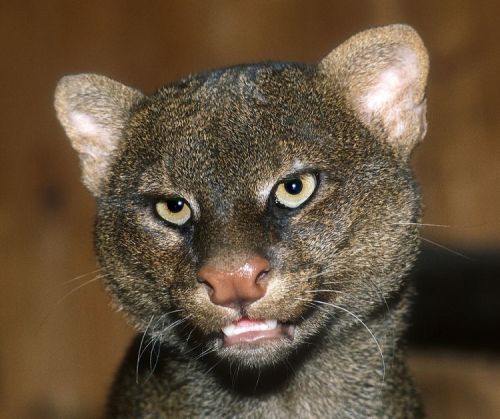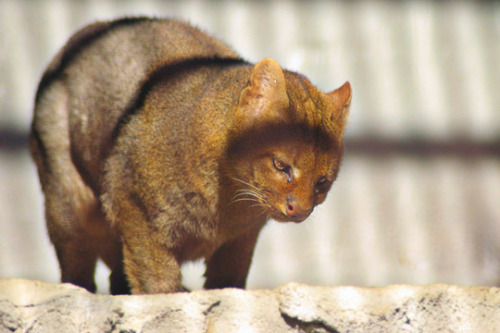Jaguarundi“Jaguarundi Puma yaguarondi are one of the strangest looking of the small cats,
Jaguarundi“Jaguarundi Puma yaguarondi are one of the strangest looking of the small cats, with slender, elongated bodies, small flattened heads, and a long tail more reminiscent of an otter than a cat. The short, smooth, unmarked coat shows three distinct colour phases: black, brownish grey, and a reddish brown phase known as the Eyra.” [src]It is native to Central and South America. It is also called the eyra cat. Jaguarundi comes from Old Tupi yawaum'di.They are not genetically similar to any of the other small South American cats, but in fact more closely related to cougars.The jaguarundi has short legs, an elongated body, and a long tail. The ears are short and rounded. The coat is not spotted and uniform in color with, at most, a few faint markings on the face and underside. The coat can be either blackish to brownish-grey (grey phase) or foxy red to chestnut (red phase); individuals of both phases can be born in the same litter. It has a total length of 53 to 77 cm (21 to 30 in) with a 31 to 60 cm (12 to 24 in) long tail, and weighs 3.5 to 9.1 kg (7.7 to 20.1 lb)“While Jaguarundis are not native to the south-eastern United States, it is believed that a feral population exists in Florida, established from an introduced population of escaped pets in the 1940’s. They were reported to be quite easy to “tame” by early Central American natives, and were used to control rodent populations around villages. Today, it is not recommended to keep these or any other wild animal, as pets. Jaguarundis are one of the only felines to not have contrasting colors on the backs of their ears.” [source] -- source link
Tumblr Blog : awesomeanimalkingdom.tumblr.com
#jaguarundi#small cats#big cats


